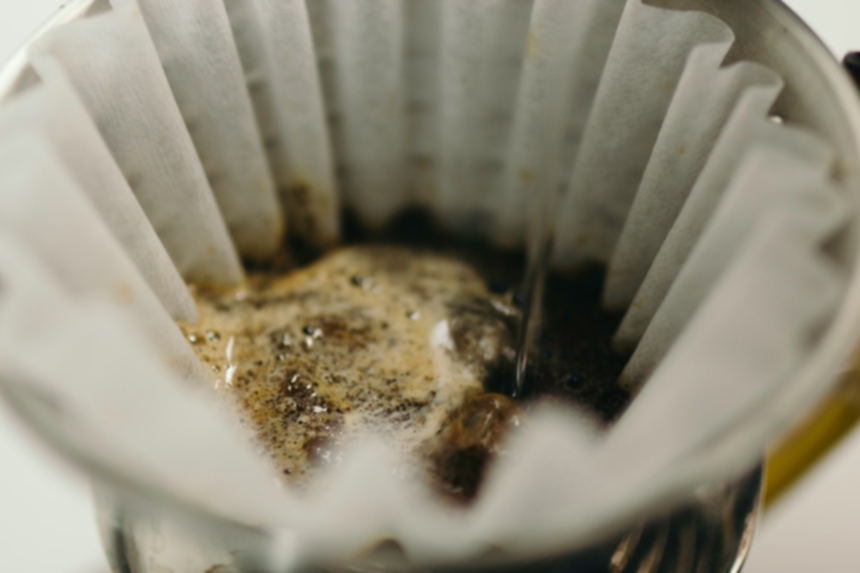Master The Three Stages Of Drip Coffee

Pour over coffee can control the characteristics of extraction results, which is the advantage of pour over coffee and its most troublesome place, because there are so many factors to consider, including grinding thickness, powder water ratio, water temperature, etc., but as long as you understand the relationship between the variables, you can master the flavor of brewed coffee.
The key to brewing better coffee is to understand the three stages of drip coffee.
1. Pre steeping (steaming)
The first stage of making coffee by hand is called pre steeping or steaming. First inject a small amount of hot water to wet the coffee powder, and then wait for about 30 seconds. The purpose of this is to remove carbon dioxide.
When roasting coffee beans, the gases produced are trapped in the beans. There is a degassing process when the roasting is complete and also when the coffee is brewed. When the ground coffee comes into contact with hot water, the remaining gas is released, a process that is suffocating. If more gas is expelled, the greater the degree of expansion of the smothering steam.
Choking contributes to the development of coffee flavour in two main ways: firstly, the carbon dioxide itself has a pungent acidity that would not be pleasant if incorporated into the coffee.
Secondly, when the coffee powder releases gas, the gas will interfere with the contact between the coffee powder and water, causing the extraction process to be affected by gas, and this process you will want to happen in the pre steeping and steaming stage, rather than in the later stage of the extraction process. The comparison of prepreg will not cause inconsistent flavor extraction.
2. Extraction
The next stage of drip coffee is to control the flavour of the brewed coffee. At each stage of the coffee making process, different chemicals are extracted. First, the fruit acids in the coffee are extracted, then the sweetness, and finally the bitterness (but it is worth noting that not all acids are as pleasant as fruit acids. Chlorogenic acid, for example, produces bitterness and dryness. (For the purposes of this article, we will only focus on acids that produce positive acidity).
Because your hands can extract different chemicals from the coffee at different points in time, you can create your preferred coffee flavour by adjusting the brewing method, and the best way to do this is to control the water temperature and brewing time.
Generally speaking, the ideal brewing temperature is around 90-96 degrees. Depending on the flavour profile, degree of roasting, solubility, grind size, and freshness of the beans, these all have corresponding optimum water temperatures.
At this stage, it is very important to cut off the water, that is, the brewed person injects the water many times. When making coffee by hand, it is suggested to reduce the number of water cuts and improve the stability of each brewed, which eliminates the human error caused by the Barista.
Water cut-off is very important, which can lead to more stable and efficient extraction. Because the water flow is large and the number of water injections is small, the extraction time will be shortened. However, the coffee floor can be relatively flat if water is added several times in a small stream. The times of water cut-off vary according to the essence of coffee and the grinding thickness.
3. Closure
The end of pour over coffee is defined here as the brewed coffee with the last 40% water. Patrick said that this part should be controlled very carefully because the last stage of extraction will easily release bitterness and other unpleasant flavors in the coffee. Even if the previous work is done well, it will destroy the cup of coffee because of the final over extraction.
Careful adjustment of the water temperature and brewing time is usually recommended. During the closing phase, less substance may be extracted due to the drop in water temperature. Again, if you can get the brewing water temperature right at this stage, you will produce a well balanced, acidic, and sweet cup of coffee.
If it is hand washing, the water temperature will naturally drop, but if it is using a coffee machine or hand washing machine, it may be possible to set the periodic water temperature. Hipster's hand washing machine can be set, such as pre steeping and steaming at 97 °C, extraction at 94 °C, and ending at 89 °C. The ending of the example data is even five degrees lower than the water temperature used for extraction.
Although different brewing parameters are recommended for different flavours of coffee, water temperature is still key to the aroma, sweetness and balance of the coffee.
Whether you make a single coffee at home or a large amount of coffee at one time, it is important to understand these three stages of brewing, and the control of water temperature is one of the most important variables.
If we can understand the relationship between these three stages, we will create a better tasting coffee.
